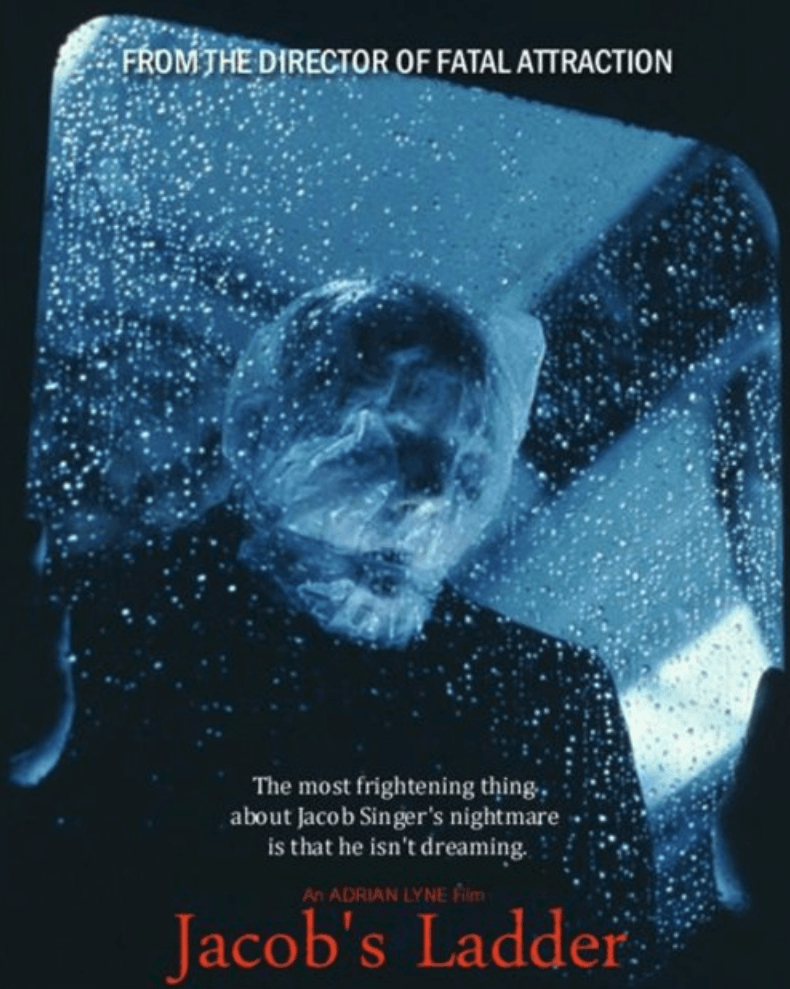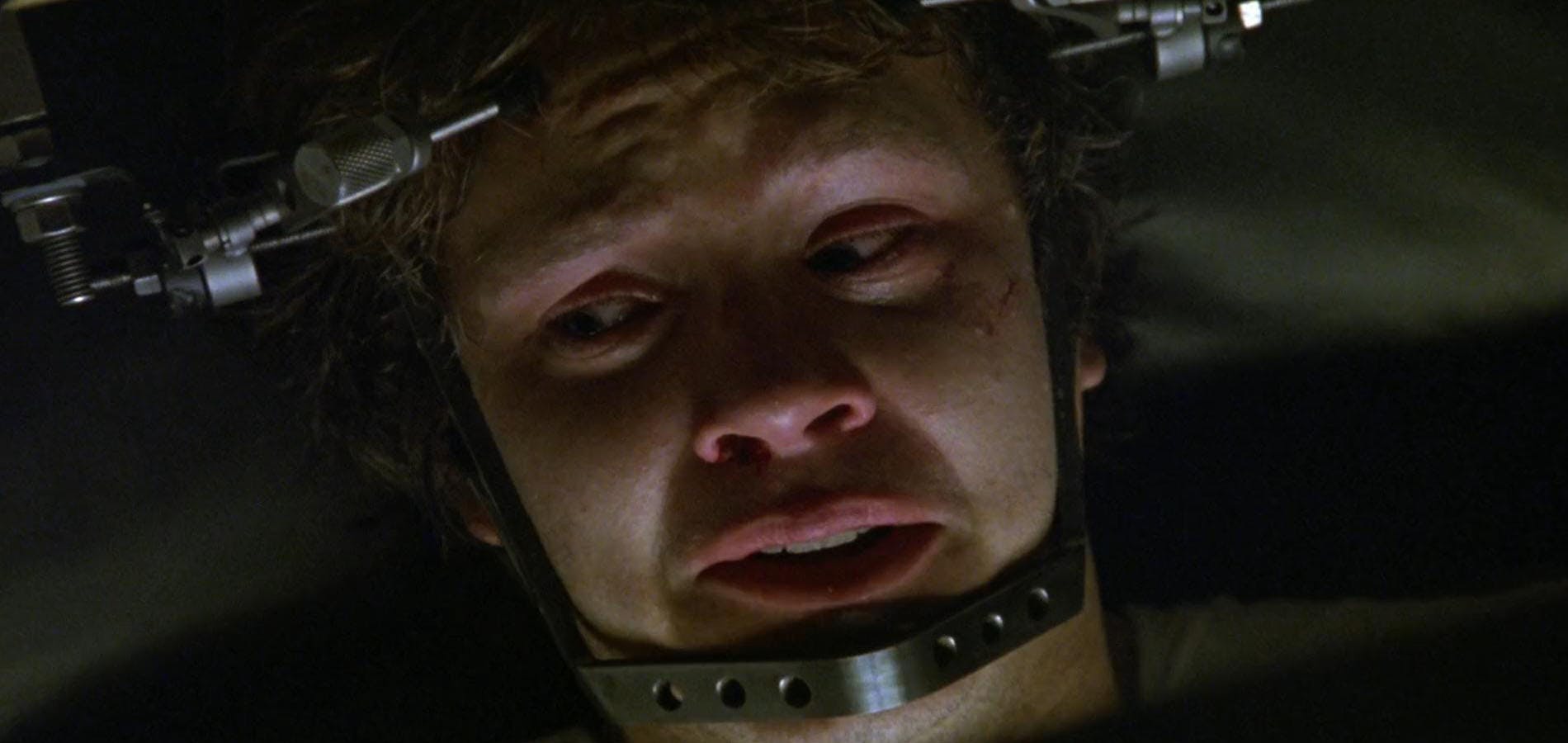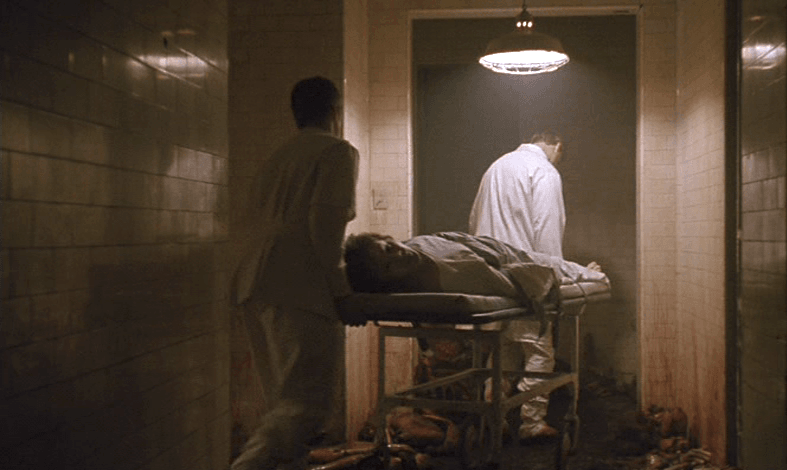 A “Jacob’s Ladder” is most commonly known as a ladder that descends from the heavens, as seen in the biblical Jacob’s dream. In ‘Jacob’s Ladder,’ writer Bruce Joel Rubin uses the imagery and meaning behind the phenomena to present a film not only about the Vietnam War but also about the journey of death itself. What happens in that moment of death? Here is one take on that.
A “Jacob’s Ladder” is most commonly known as a ladder that descends from the heavens, as seen in the biblical Jacob’s dream. In ‘Jacob’s Ladder,’ writer Bruce Joel Rubin uses the imagery and meaning behind the phenomena to present a film not only about the Vietnam War but also about the journey of death itself. What happens in that moment of death? Here is one take on that.
The film opens with a scene from Vietnam. There is a group of soldiers that are obviously pretty close to one another, joking around. Quickly they are ambushed, and at the same time, some of the soldiers begin to act strangely. A tense moment follows with some of them falling down, grasping their heads, foaming at the mouth, and displaying various other symptoms. The protagonist, Jacob Singer (played by the talented Tim Robbins), is shown taking a bayonet in the abdomen.
The scene quickly cuts to Jacob, years later, asleep on a subway, wearing a postal uniform. The dark, ominous tone is set in the movie in these first few scenes. There are many oddities and unexplained phenomena that Jacob experiences. We are taken on a journey to see what has become of his life after the war: he has left his wife and children, and now lives with a woman named Jezzie. She is a beautiful, complex character played wonderfully by Elizabeth Pena. She is cold and insensitive to the fact that Jacob has children, one of whom died before Jacob went to war. Jacob’s dead son, Gabe (a very young and uncredited Macauley Culkin), plays a pivotal role throughout the movie.
Jacob suffers through many different situations. He has visions of demons and distorted people whose heads move impossibly fast. The old group of soldiers, who are still close friends, are brought back together when one of their own, Paul (Pruitt Taylor Vince), dies, but not before revealing to Jacob that he has also been seeing demons. The men briefly attempt to make a legal case against the government for wrongdoings, but it quickly falls apart. Meanwhile, Jacob’s visions are getting worse.

One memorable scene involves Jacob and Jezzie going to a party. At the party, he stumbles into having his palm read and receives a cryptic message. Afterward, he goes to look for Jezzie and finds her on the dance floor. She dances with him briefly, and when he declines to dance more, she joins another man. As Jacob looks on, they start to move more sensually to the beat of the song. Quickly it turns into what seems to be sex on the dance floor, but the clincher is that the man begins to morph into some beast with wings. They continue to dance, writhing against each other, until it becomes apparent that Jezzie is having sex with some type of creature. The scene ends with a horn exploding through her mouth, and Jacob fainting.
A man who claims to have been a chemist working for the government during the Vietnam War approaches Jacob. He explains that they were testing a drug that would increase aggression in the soldiers, named “The Ladder,” and that Jacob’s battalion had been secretly receiving it. The significance of the drug name is that it supposedly took you on “a fast trip straight down the ladder, right to the primal fear, right to the base anger.” This also gives double meanings to the title of the movie.
The most unsettling scenes come when director Adrian Lyne employs a technique in which the actor would wave his head around while they were filmed at a low frame rate. This allowed for the illusion of the actors head moving very quickly, causing it to blur. The technique was known for its later influence on the Silent Hill video game and film franchise.
‘Jacob’s Ladder’ is a deep, thought-provoking film more about the human condition than it is a science-fiction tale or a war movie, although it obviously features those aspects as well. The audience can find themselves relating to Jacob, at times, during his grief, and also entering areas they’ve never allowed themselves to go. Visually pleasing and excellently acted, the film holds our attention from the beginning to the end with ease. We want to know what is going to happen next to our hero, Jacob.

The Vietnam War was real. The soldiers who fought in it came back with memories and physical hardships that were tangible and damaging. In the film, the use of a fictitious drug, “The Ladder,” brought to mind a parallel between the government’s use of Agent Orange in this era and its subsequent effects on our soldiers. Embellished, of course, but the premise here is similar. Jacob’s grieving from his loss of a child is, unfortunately, a very real aspect to life. His delusions and his visions are things he owns, and as such cannot be disputed or validated.
Following Jacob, the audience can feel the atrocities that he endures repeatedly throughout the film. There is a human edge to the story that is able to stir emotions within us. Because of this, it is easy to become invested in the film. Rubin uses his talents to brilliantly unfold this delicate and layered storyline.
Lyne utilized groundbreaking techniques and raw viscera to bring us the edgy film we see today. Although it was made almost 30 years ago, it stands the test of time with honor. Jacob’s demons both entrance and terrify us. One visually stunning scene is the one in the hospital, as Jacob is being wheeled on a gurney. This scene alone displays Lyne’s true talent and form as a director.
One of the subsection of movies that features horror/science-fiction elements without making the “scary sci-fi” the central aspect of the film, ‘Jacob’s Ladder’ is a fascinating foray into the rigors of violence on the human mind and body. It is definitely worth a viewing for any fan of “smart sci-fi” tales.
